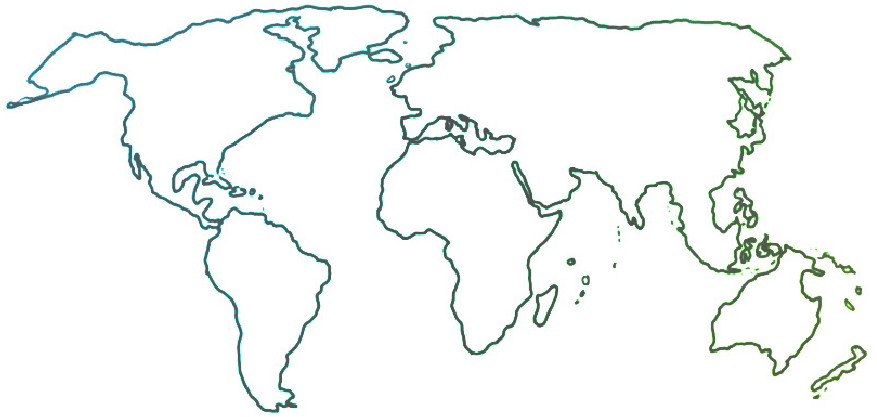
Topics
News & Resources
Safe Spaces in Unsafe Places: Talking with Lucas Dols of Sounds of Change
Patrick Scafidi, Executive Editor, The Ensemble, in conversation with Lucas Dols, Founder/Director, Sounds of Change
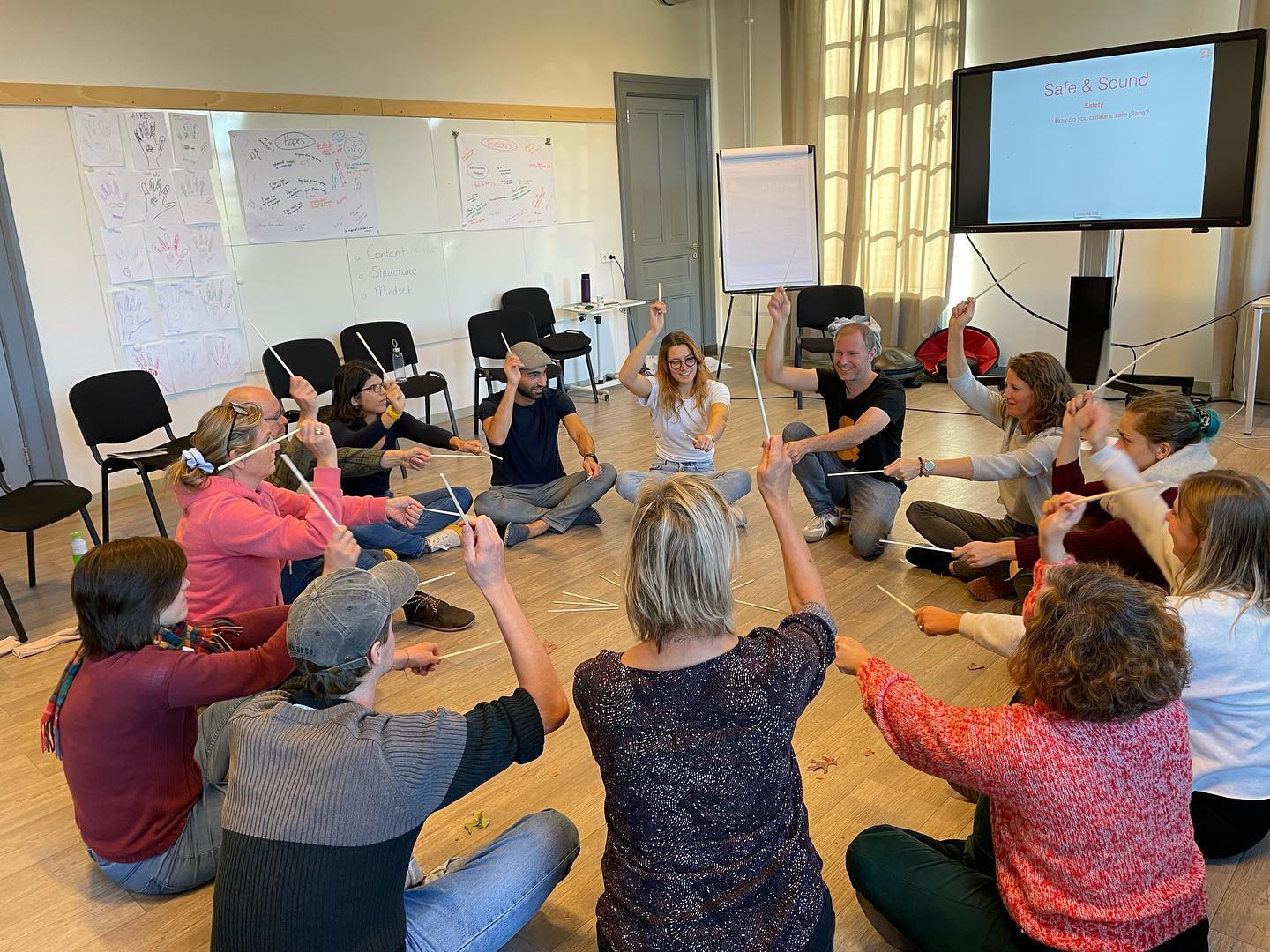
When we last spoke to Sounds of Change Founder and Director Lucas Dols, in 2022, he was hopeful about an upcoming year of growth for the organization. Training educators, youth support organizations, and mental health professionals to use music in their work with traumatized or marginalized young people, Sounds of Change relies on those who are already on the ground to carry their lessons into affected communities. The outcome is mutually beneficial—trauma-sensitive music initiatives are run by those who live in and know the communities, and Sounds of Change ensures financial and ecological sustainability, without using resources to travel or disrupting a region’s delicate social balance.
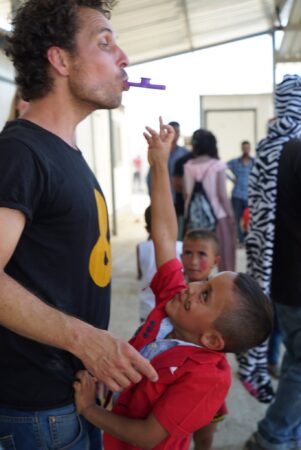
Seventeen months later, the world is no less difficult or overwhelming for young people looking to find their way. With a focus on those who are most affected by violence and displacement abroad, we talked with Lucas about the work Sounds of Change is doing to help.
If you missed our first conversation with Lucas, from September 2022, check it out here.
The Ensemble: Where is Sounds of Change concentrating efforts now?
Lucas Dols: We’re working on many projects this year. Of course, we’re continuing our work online with mental health specialists in Ukraine, where we’ve been facilitating webinars on trauma-sensitive support and the use of music and art with trauma for almost two years.
Last December, we reconnected with the Hope Flowers School in Bethlehem (West Bank, Palestine). They asked us for online training and support for their teacher and therapist team. We’re now leading a series of webinars for the Hope Flowers team—a program quite similar to what we’ve been doing online in Ukraine.
How did that partnership come to be? Can you tell us more about how Sounds of Change is supporting Hope Flowers?

The Hope Flowers School is a pioneer in constructive peace education. They’re so unique in what they do. The school provides special needs education to children ages 5–14 who have been traumatized by conflict and are exposed to poverty, malnutrition, and lack of perspective. They have a beautiful mission: “educating for the well-being of humanity.” We were working with them as far back as 2017–19 and have stayed in contact ever since. So, we responded fast when they requested support.
Along with our partner organizations, Trauma International and Safe & Sound, we are now running an online training program for the teacher and therapist team at the Hope Flowers School. The program focuses on basic knowledge about trauma and trauma-sensitive support tools designed to help the school’s children. The program also includes trauma-sensitive music and art techniques and interventions.
[Learn more about the Hope Flowers School’s collaboration with SoC here.]
What have you seen in the young people over there? Many distant observers struggle to understand the experiences these children are having—please share what you’re comfortable sharing about how those experiences show up in the classroom.

In the first image of this 2018 post about my trip to the West Bank, you can see how close an Israeli settlement is to the school. A year later, when I went back, the settlement was at least one block closer. This is a visible example of the pressure that people in the West Bank feel, including the Hope Flowers kids.
The teachers, therapists, and children there are now under constant pressure. Sometimes the Israeli army comes very close to the school, which scares the children a lot. Most children are quite vulnerable due to their special needs, to say nothing of their physical safety. Not all children might understand what is going on.
How are those feelings addressed by the Hope Flowers team?
During the online sessions, we see a lot of emotions in the teachers and therapists—stress, fear, sadness, anger. But they are also so powerful in this moment. When something challenging happens to or around the school’s community, the team feels even more energy to continue their important work. And when we “check out” of sessions, we hear words like “comfort, relief, hope, connection, optimism, happiness.”
We try to address all these emotions and give them tools to release and work through them—the same tools they can use in their work with the children.
How do you do that? You’ve said before that you are not a trauma specialist. And yet nearly all of your work takes you into the heart of traumatized regions, supporting those who are not usually afforded fair opportunities to process that trauma.
I completed a Trauma Sensitive Support course with Trauma International last year, so I feel a bit more confident now discussing and working with trauma. Maybe the most useful insight I learned was the concept of four key elements in trauma sensitive work: movement, connection, predictability, and giving back a sense of control.
The first two, movement and connection, are in most music activities that teachers use. Predictability is something that I’ve started to implement more in my work; “tell what you do and do what you tell.” That means always using the same structure (starting with a check-in, finishing with a check-out), keeping more aware of the time, repeating more exercises, etc.
Giving back control is something that I’ve always believed in. It can be as simple as providing children with more space to choose or lead in your sessions. You don’t have to give full control; the feeling of control is sometimes enough. And when you improvise together, you have a lot of control over what you do and how you do it. We use this method a lot in composing and songwriting sessions (creative sessions), where children/participants can take control in telling their own stories, making their own melodies, etc.
A lot of people we work with or train have lived in situations where they had limited control. Like when you live in a refugee camp, a marginalized area, or a prison. You might not be able to choose what you eat, where you live, what you do, etc.
In creative sessions, you give people the space to take back control of an element of their lives.
What would you say are the key elements of your training sessions?
Though each project requires its own learning balance, training is grounded in five key elements [emphasis ours]:
- Content (games, activities, exercises)
- Structure (our six-step session-design system)
- Facilitation of skills (trauma sensitivity, increasing creativity, building a safe space, flexibility
- Theory (trauma, music therapy, resilience, cultural sensitivity)
- Self-care (personal relief, as personal experience leads to understanding the power of the methodology)
We tailor our training sessions for each partner organization, depending on their needs, requests. and experiences and the context they work in. Projects are differentiated into three categories:
- Team Training International (Northeast Syria, Northern Iraq, and Turkey this year)—these sessions focus on aid workers, most of whom have little to no musical experience
- Online Trauma Support (Ukraine, West Bank), mainly for mental health professionals and teachers
- Sounds of Change Academy (the Netherlands), which focuses on individual musicians and therapists, most with lots of musical experience.
What are your other current projects?
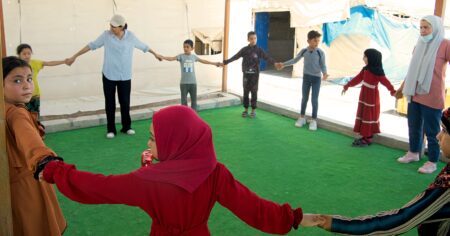
We’re starting a new project: working with ECHO (European Civil Protection and Humanitarian Aid Operations). In collaboration with them, we will train two teams of mental health (PSS, or Psycho-Social Support) and education experts in Turkey this year. Both teams are working with Syrian refugees there—one team is located in Gaziantep (the epicenter of the earthquake), the other in Mardin.
Last year we ran the third edition of our Sounds of Change Academy in the Netherlands, training 15 international participants for five days. It was the first time that we utilized international scholarships, which enabled us to invite some very special participants. Two came from Ukraine, one from Syria, one from Jordan, and another from Colombia.
Insofar as they are similar, what does your work look like in those places? Are any of these projects in dialogue with one another?
Some projects are in dialogue with each other. During our international training programs we gather experiences and stories that we then share in our Academy in the Netherlands—and vice versa. And during our online webinars with Ukraine psychologists, our partner Anne van den Ouwelant (Trauma International) invited psychologists she’s worked with in Bosnia and Herzegovina to share their experiences working in war situations.
We always continue coaching people we have trained online. In some cases, finding a quality internet connection is a big challenge, but we always search for possibilities. For example, since COVID began, we have been facilitating training sessions through Whatsapp.
We try to respond to any request for help—we’re always searching for the most suitable way to support those who are asking for support and those we’ve worked with.
When we last spoke, you said that “creating a safe space is the most important thing” in your work. How do you go about doing that, especially in areas where physical safety is not a given?
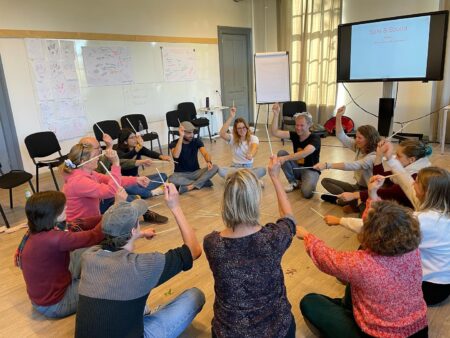
That’s an interesting question. We’ve actually published research on creating a safe space, after our first SoC Academy group in the Netherlands in 2021. As part of their learning journey, the participants of the Academy ran six weekly music workshops for children living in four different asylum centers in the Netherlands.
Our big question was: Are the people that we train able to create a safe space, and, if so, how? We found that it depends primarily on creating a safe emotional space—connection, clear and predictable structure, staying in the moment, flexibility, body language awareness, and the use of your voice. Facilitators must use their leadership to give everyone equal space to share. Non-judgmental reactions are of great importance as well.
Last question: What do you think the music for social change field should be prioritizing right now?
“Giving back control” is something that I have always believed in, even before I learned that it helps in trauma-sensitive contexts. I think that concept is missing from many programs and approaches. When you cede control, you don’t know exactly what is going to happen in your sessions, which makes it difficult to predict outcomes and to scale up those practices.
That might be scary or counterintuitive, but the result is worth it. Participants will feel a sense of ownership, belonging, and recognition. And that is one of the most important experiences they can have.
Interview conducted by Patrick Scafidi.

